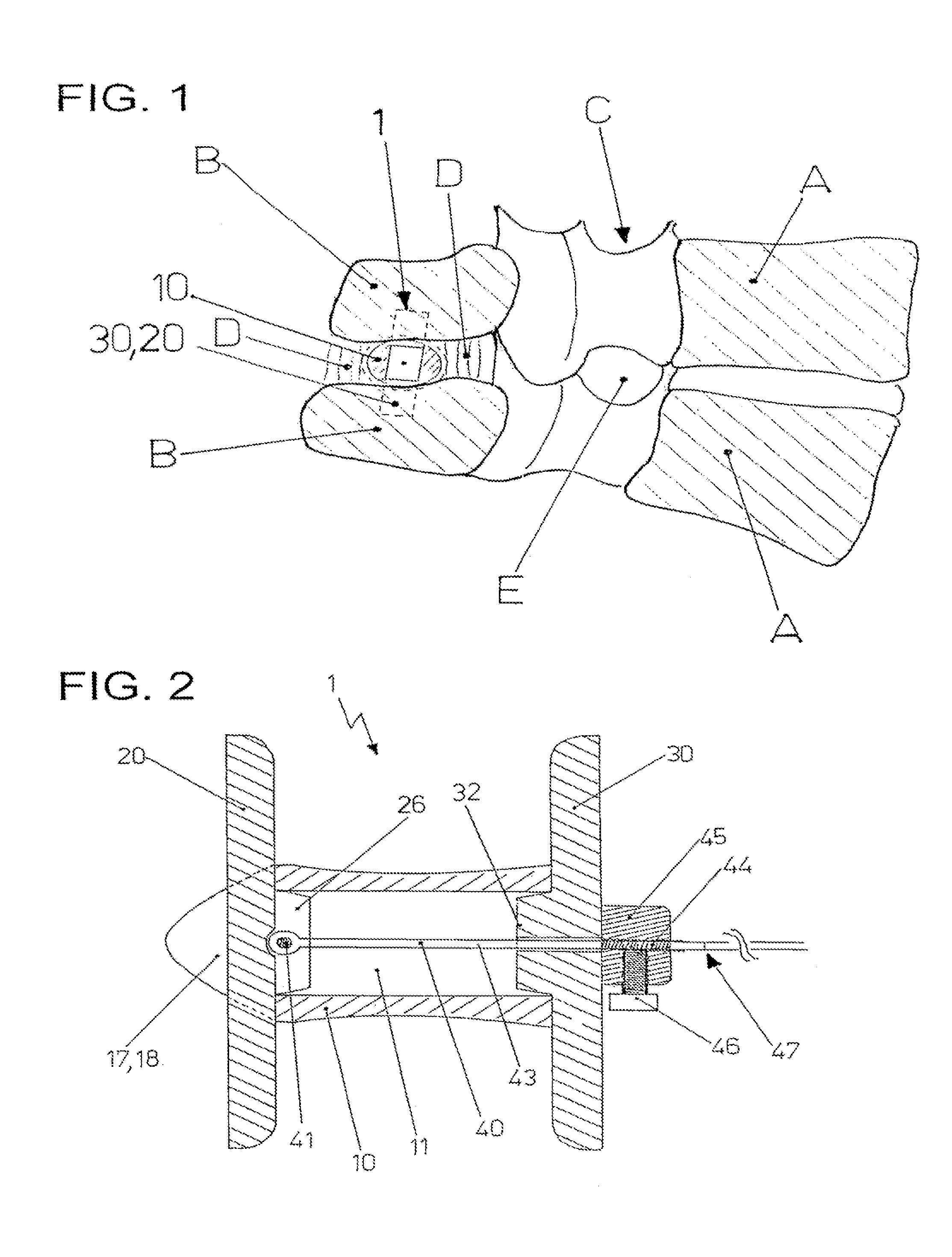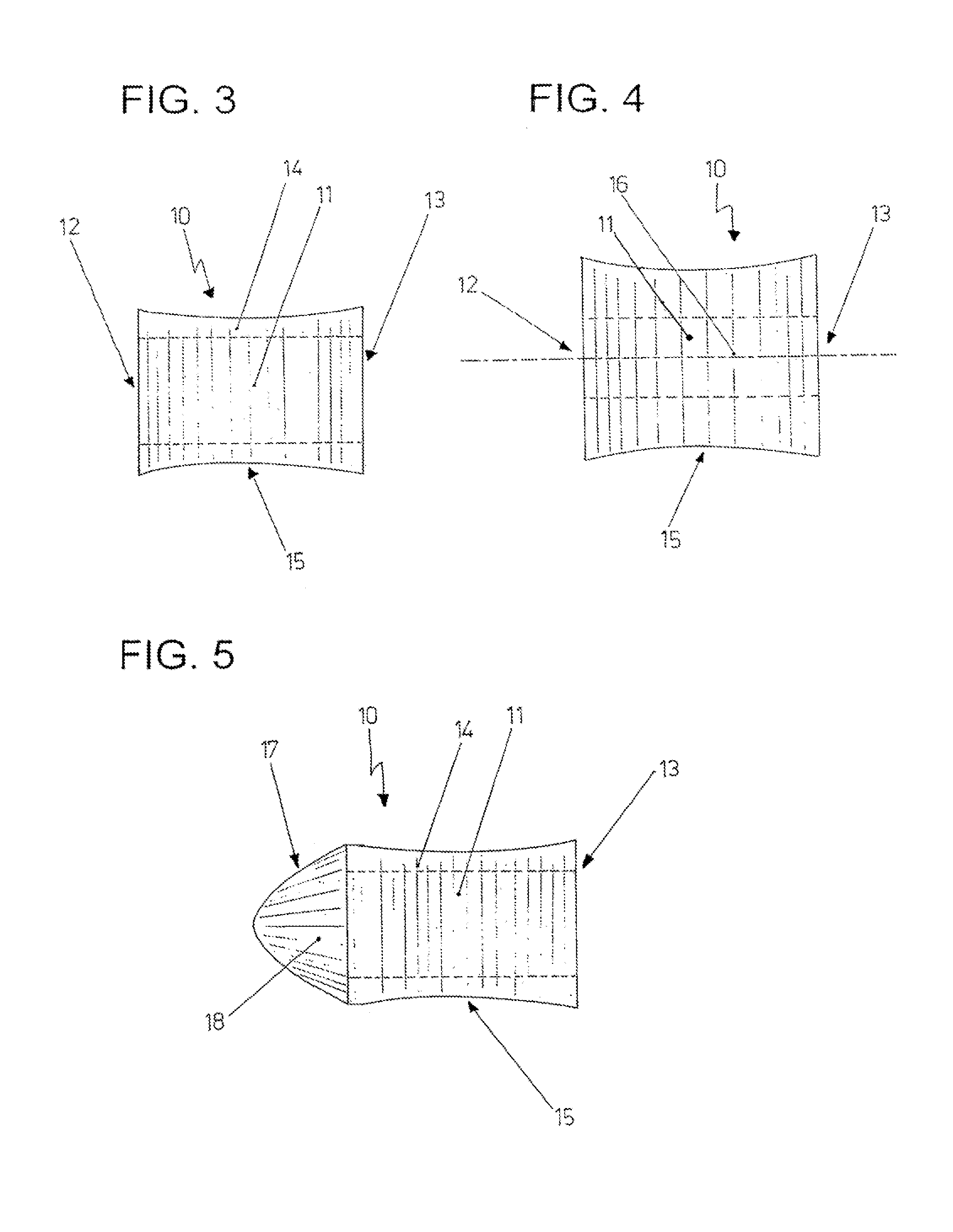Implant for the treatment of lumbar spinal canal stenosis
a technology for lumbar spinal canals and implants, applied in the field of implants for treating lumbar spinal canal stenosis, can solve the problems of reducing the risk of post-operative complications and the risk of complications is considerabl
- Summary
- Abstract
- Description
- Claims
- Application Information
AI Technical Summary
Benefits of technology
Problems solved by technology
Method used
Image
Examples
Embodiment Construction
[0039]The situation with regard to a patient is shown in FIG. 1. Two adjacent vertebral bodies or vertebrae are shown at A. Their spinous processes are indicated at B. The spinal canal C runs between the vertebral bodies A and the spinous processes B. E represents the exit locations of the nerve roots. The interspinal ligament D runs between two adjacent spinous processes B. A spacer 10 crosses through this ligament, and in its position is secured against transversal displacement by a first retaining element 20 on the one side, and by a second retaining element 30 on the other side. This securement is however hardly effective since the spacer 10 is designed in a waisted manner and thus centers between the two spinous processes B.
[0040]Implants of this type are required when signs of the so-called Baastrup / kissing spine syndrome appear. The Baastrup syndrome indicates the contacting of two adjacent spinous processes. In this situation, the supraspinal ligament is forwardly curved tow...
PUM
 Login to View More
Login to View More Abstract
Description
Claims
Application Information
 Login to View More
Login to View More - R&D
- Intellectual Property
- Life Sciences
- Materials
- Tech Scout
- Unparalleled Data Quality
- Higher Quality Content
- 60% Fewer Hallucinations
Browse by: Latest US Patents, China's latest patents, Technical Efficacy Thesaurus, Application Domain, Technology Topic, Popular Technical Reports.
© 2025 PatSnap. All rights reserved.Legal|Privacy policy|Modern Slavery Act Transparency Statement|Sitemap|About US| Contact US: help@patsnap.com



